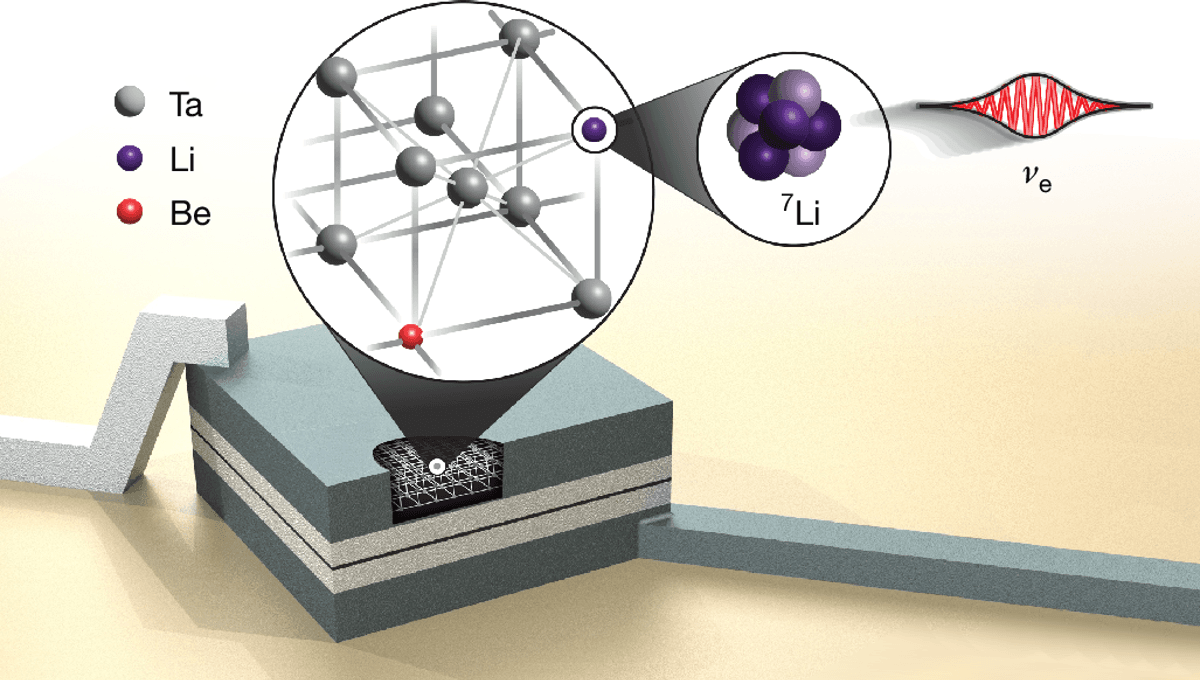
For the first time, scientists have successfully measured the quantum size of a neutrino using cutting-edge tabletop experiments focused on the particle’s decay.
Neutrinos are believed to be the second most abundant particles in the universe, following photons, and are the most numerous massive particles. Not long ago, researchers were unsure if it would even be possible to experimentally validate their existence. Due to their extremely weak interactions with matter, including detection equipment, only a minuscule fraction of neutrinos can actually be recorded. A recent indirect observation of a neutrino that is an astonishing 35 times more energetic than any previously recorded demonstrates the vast unknowns still associated with these particles.
While we can estimate the energy of neutrinos when they are detected, many other measurements, including those related to their size, have remained elusive. A research team refers to neutrinos as “the least understood fundamental particles of nature,” but they have made strides in unraveling this mystery by utilizing radioactive beryllium incorporated into superconducting tantalum-aluminum sensors.
Subatomic particles, unlike ordinary objects, do not possess fixed sizes. They exist as wave-like probability distributions due to their wave-particle duality. The exact spread of a neutrino’s wave packet has remained undefined historically, with previous estimates of their sizes varying by a factor of ten trillion—akin to not being able to determine if a particle is the size of a marble or comparable to the distance from Earth to the Sun.
The research team studied the decay of beryllium-7 into lithium, a process that generates some of the neutrinos we receive from the Sun. “By accurately assessing the behavior of lithium atoms produced during the beryllium decay, we gain a direct insight into the quantum characteristics of neutrinos, which are notoriously difficult to detect,” stated Kyle Leach, an Associate Professor of Physics at the Colorado School of Mines and co-leader of the research, in a news release.
This technique, known as the Beryllium Electron capture in Superconducting Tunnel junctions experiment (BeEST), is effective because the neutrinos and lithium nuclei are entangled, allowing insights from one measurement to inform the other.
The findings indicate that the size of the neutrino is at least 6.2 picometers across. This measurement is roughly one-tenth the radius of a small atom and about a thousand times larger than the size of an atomic nucleus. However, this discovery still represents a significantly smaller metric than previously proposed estimates that suggested neutrinos could be as large as 2 meters (7 feet). It’s worth noting that neutrinos exist in different “flavors,” and this measurement specifically pertains to electron neutrinos.
Traditionally, most neutrino research has taken place in powerful particle accelerators like the Large Hadron Collider, or in vast detector arrays concealed beneath Antarctic ice or at the ocean’s depths. However, this team utilized superconducting sensors finer than a human hair to analyze lithium atoms, allowing them to conduct the experiment within a compact laboratory space. “This research exemplifies how small-scale, high-precision experiments can enhance the discoveries made at larger particle colliders,” Leach remarked.
“This is just the beginning,” Leach noted. “Our results could have significant implications, from refining the standard model of particle physics to improving techniques for detecting neutrinos from both nuclear reactors and cosmic sources. We eagerly anticipate what comes next.”
The study is available as open access in the journal Nature.









